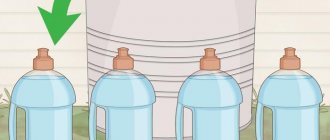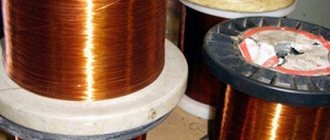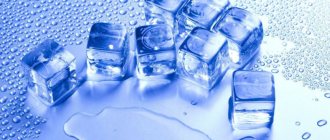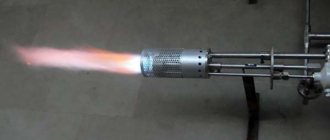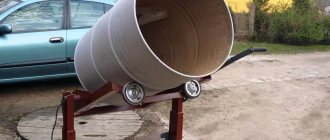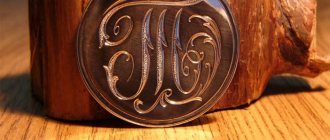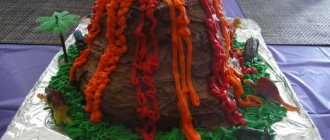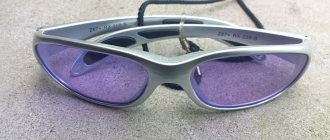Well, who among us in childhood did not try to make “pop” from available ingredients: vinegar and soda? But if at a young age few people understood the nature of this phenomenon, then in school years, in chemistry lessons, absolutely everyone studied the substitution reaction between acids and alkalis.
Any interaction of acids and alkalis is accompanied by the release of carbon dioxide. This means that all we need to prepare a carbonated drink is to collect carbon dioxide and dissolve it in liquid.
To make soda at home, it is not at all necessary to use table vinegar or vinegar essence. Can be used:
- citric acid in crystals;
- freshly squeezed lime, lemon or orange juice;
- wine or apple cider vinegar.
The main thing is to maintain a proportional ratio between the ingredients. Excessive amounts of any of them will give the finished drink an unpleasant aftertaste.
To make 1 liter of the finished drink, you will need:
- 17 g of soda and 18 g of vinegar essence;
- 17 g of soda and 150 ml of 8% wine or apple cider vinegar;
- 17 g of soda and 36 g of citric acid;
- 17 g of soda and 50 g of freshly squeezed lemon juice.
The main reason to avoid using vinegar essence when preparing sparkling water at home is the formation of sodium acetate, which is an irritant. For some people, even a negligible amount of sodium acetic acid can cause nausea, irritation of the mucous membranes, and disruption of the gastrointestinal tract.
The effect of sodium citrate (a salt formed by the interaction of citric acid and soda) has a less harmful effect on the human body.
Unfortunately, in the 21st century, no manufacturer makes citric acid from citrus juice. Completely different ingredients are used as the main raw materials:
- sweet potato;
- cassava;
- molasses;
- sucrose.
Therefore, if you want to make a carbonated drink similar to soda, use freshly squeezed lime or unripe lemon juice instead of citric acid crystals.
Industrial production of soda
Most of the enterprises producing soda are located near artesian wells. They pump out the raw materials for their products from the depths of the earth with powerful pumping units.
Despite the “conditional” purity of artesian water, it is necessarily passed through a system of coal, sand and salt filters. At this stage, harmful impurities and heavy metal salts are removed from it. Additionally, food colors, flavors, sweeteners, flavor enhancers and preservatives are added, and only at the last stage the water is carbonated by saturating it with carbon dioxide.
But this method is used exclusively in the production of soda. Mineral waters, which are called table or medicinal, are produced using a different technology. The value of mineral water lies in the presence of beneficial salts in its composition. Therefore, they are not subjected to filtration - to minimize the risk of developing pathogenic microflora, they are pasteurized.
You can often hear the question: “Why do I carbonate mineral water, since it already has a lot of useful properties?” Unfortunately, real mineral water does not always have a pleasant taste; dissolved salts give it a salty or bitter taste, with a characteristic aftertaste, and sometimes with smell. To improve the taste, it is subjected to artificial gasification.
That is why some types of mineral water are made carbonated and non-carbonated. Classic example of Essentuka No. 4 and No. 17
Note. The presence of sediment at the bottom of a bottle of mineral water is not always associated with poor quality of the product. Most mineral salts tend to precipitate during storage.
There are also lines for the production of mineral water from ordinary artesian water. To do this, instead of sweeteners and dyes, mineral salts are added to purified water, bringing its composition as close as possible to that obtained from natural sources. The taste of the finished drink prepared in this way is practically no different.
Rules for drinking the drink
For safe, and most importantly medicinal use of fizzy drink, the following several rules should be followed:
- To make pop, use only warm water at approximately 36 degrees.
- To avoid an excess of carbon dioxide in the stomach, before preparing a drink with mineral water, it is necessary to release all the gas from it.
- Check the quality of the soda before cooking. To do this, pour sodium bicarbonate into a teaspoon and drop a drop of vinegar on it. If the product is good, then the appropriate reaction should occur (hissing and bubbles);
- Ready-made pop is usually used half an hour before meals.
- Drink no more than one glass per day;
- It is forbidden to drink the drink on an empty stomach, because it will begin to digest its own mucous membrane.
Calorie content and composition
The energy value of regular carbonated or mineral water is 0 calories. This water does not cause weight gain and has beneficial properties.
Unlike mineral water, sweet carbonated water contains a huge amount of sweeteners. Even if the label says “sugar-free,” this does not mean that the drink has zero calories.
Unfortunately, no studies have been done to study the effect of sweeteners on the human body. One can only guess how regular consumption of such drinks will affect us in the future. Nutritionists from all countries strongly recommend abandoning sweet soda in favor of purified mineralized or lightly carbonated water.
In addition to sugar, flavor enhancers, flavors, dyes and preservatives are added to soda. The list of ingredients used may vary. Tea leaf extract and concentrated juices are sometimes used as flavoring fillers, and instead of adding traditional preservatives, the prepared carbonated water is pasteurized. Information about the preparation method and composition of the product is displayed on the label. The cost and beneficial properties of such drinks are somewhat higher.
All information about the composition of sparkling water is displayed on the label. For mineral table waters, they additionally indicate the place of extraction, the number of the well or source and describe in detail the amount of salts contained. The absence of such data is a reason to doubt the originality of the product.
Is there any benefit?
But people benefit from natural soda mineral waters, containing a large amount of bicarbonate, and carbonated by nature itself. Their chemical composition has been well studied, indications and contraindications have been identified and defined.
For example, carbonated mineral water “Narzan” is useful for both children and pregnant women. “Narzan” cleanses the body of toxins and waste, removes acetone, free radicals, and other harmful substances. But this water should not be drunk without moderation, otherwise, instead of benefit, you can get harm.
In addition, various mineral waters are carbonated, which increases their consumer appeal without compromising their beneficial properties.
You can gargle with soda water for sore throat and mouth for stomatitis and toothache.
How to make homemade lemonade
To give homemade soda an additional taste and increase its beneficial properties, it is advisable to make it not from ordinary purified water, but from herbal and fruit infusions.
Ginger lemonade
Ginger, which until recently was distributed exclusively in Asia, is increasingly appearing in the diet of Europeans. It is added to meat and fish dishes, baked goods and confectionery, teas and drinks. It tones, improves metabolism and quenches thirst. It is not surprising that ginger lemonade has won universal love among residents of both continents. To prepare it you will need:
- Water – 1 l;
- Ginger – 30 g;
- Lemon – 70 g;
- Granulated sugar – 60 g;
- Melissa - 1 sprig.
Preparation
Peel the ginger and finely chop it.
Cut the lemon into thin slices. Place all ingredients in a container and fill with boiling water.
Leave for 10 minutes and then remove the lemon wedges. If this is not done, they will give the drink a bitter taste. Cool the lemonade to 5 - 10 degrees and filter.
Now it can be carbonated.
Note. Drinks containing citrus fruits should not be carbonated chemically (by adding soda). It is better to resort to the physical method (adding carbon dioxide).
Cucumber lemonade
You will need:
- Sparkling water – 1 l;
- Cucumber – 300 g;
- Lemon – 75 g;
- Sugar to taste;
- Mint or lemon balm to taste.
Preparation.
Grate the cucumber on a coarse grater or finely chop it. Cut the lemon into thin slices and thoroughly rub with granulated sugar and mint. Place all ingredients in a glass container and fill with water.
Let it brew. Filter and cool.
Lemonade with cinnamon and grapefruit
You will need:
- Lemon – 70 g;
- Grapefruit – 250 g;
- Sugar – 60 g;
- Cinnamon – 2 pinches or ½ stick.
Preparation.
Cut the lemon into thin slices and grind with granulated sugar and cinnamon.
Peel the grapefruit from zest and membranes. Squeeze out the juice.
Place all ingredients in a container and fill with soda. Seal carefully and leave to extract the nutritional and flavor components into the liquid.
"Baikal"
“Baikal” was a kind of response to the release of American cola, but its composition differed significantly in a positive direction: beneficial extracts of eleutherococcus, licorice root, St. John's wort gave strength and strengthened the immune system, and essential oils of laurel, eucalyptus, lemon and fir gave a unique taste.
Ingredients for homemade Baikal:
- 10 g licorice powder or root;
- 10 g eleutherococcus;
- 10 g St. John's wort;
- 10 g fir needles;
- half a lemon;
- 200 g sugar;
- 3 liters of water.
Mix all the herbs, add hot water and let steep for three hours. Strain and heat until the sugar can be dissolved and the squeezed lemon juice can be added. Let it cool. To make the drink carbonated, you need to pass it through a siphon, or replace part of the water with carbonated water (add it to the finished infusion).
[CHOSEN FOR YOU] 10 products with an infinite shelf life
Can I use it?
If you do not suffer from chronic gastrointestinal diseases, then there is no reason to refuse to drink soda. The only exceptions are sweet carbonated drinks with synthetic fillers. Also, do not abuse homemade soda made by combining soda and acid.
Of course, if you urgently need to get rid of heartburn, “start a stuck stomach,” or get rid of a hangover, a glass of this drink won’t hurt. In other cases, it is better to use a siphon and cylinders with carbon dioxide or “distill” carbon dioxide from one bottle to another. Yes, longer, but healthier.
For gastrointestinal diseases
Note. Mineral water from natural sources can bring not only benefits to the body, but also harm. If you suffer from chronic gastrointestinal diseases, be sure to read the instructions or consult a specialist before use.
During pregnancy
During pregnancy and lactation, it is better to replace sparkling water with mineralized or purified water. Drink table mineral water only after consulting a doctor.
When losing weight
The process of losing weight is inextricably linked with physical activity and nutritional deficiencies. Therefore, replenishing the acid-base balance by drinking mineralized water is not only not harmful, but also beneficial. The only condition is that you can’t drink soda during or after training.
Contraindications
Like any medicinal product, homemade soda has its contraindications.
Before using fizzy drink for treatment or weight loss, it is important to consider the presence of existing diseases. The use of fizzy drink is prohibited when:
- the presence of gastrointestinal diseases (ulcers, gastritis, colitis);
- the presence of intolerance to the components;
- pregnancy;
- breastfeeding;
- diabetes mellitus;
- hypertension;
- presence of diseases of the cardiovascular system;
- increased acidity.
Drinking homemade soda if a person has the above diseases will lead to a worsening of the condition, exacerbation of the disease, and unpleasant consequences.
Unstoppable Bubbles
There is a belief that excessive consumption of carbonated water leads to increased gas formation and bloating. With normal functioning of the gastrointestinal tract, such side effects almost never appear. Most likely, the cause of flatulence is hidden in the disruption of the digestive tract.
To eradicate it, you should definitely visit a gastroenterologist and carefully review your diet. Many foods combined with soda can cause gas formation (brown bread, legumes, cabbage, grapes). Sometimes, to correct the situation, it is enough to consume all these products separately.
Drinking water purified from salts and impurities has a good effect on well-being. It remains to be seen whether carbonating water is beneficial to human health or not. Are there machines to make your own soda? Get acquainted with the most commonly used siphons at home and their additional functions. Finally, is it possible to make a device with your own hands?
Why you should have a siphon at home
In the ancient 60-90s of the last century, almost every housewife had a nondescript metal canister of soda, sweet or not, depending on the availability of syrup at the gas station. Even then, people knew that carbonating water - saturating it with carbon dioxide - was carried out not only to satisfy the gastronomic taste, but for health improvement. True, such water tastes better and invigorates, and quickly satisfies the desire to drink.
Natural sparkling water, 19 liters, delivered, in glass or plastic containers, is several times healthier than artificial water, but it is not always possible to buy it. Liquid stored in plastic bottles can be harmful if the manufacturer uses a non-food grade polymer. The solution is to buy home equipment for carbonating water, but like all kitchen appliances, it has advantages and disadvantages.
: Racial materials
Before purchasing, you need to find the nearest refill station for carbon dioxide cylinders and ask which container is suitable for them, any or whether it has special requirements. Material:
- buy a gas cylinder of the required size 1-20 liters, depending on the needs of the family;
- double pressure regulator;
- gas hose with a ball blocker at the end (it becomes possible to quickly turn off the gas);
- a converter cap with the same block as on the hose, for a 2-liter plastic bottle;
- two liter capacity.
What’s good about the double regulator is that it indicates how much carbon dioxide is left in the cylinder, but it works at a pressure of 3 Ata, and less is required. Solution: buy a regular regulator.
Pros and cons
Easy to use, which even children will quickly learn to use, the lightweight and compact siphon will take its rightful place in the kitchen. The latest models differ:
- stylish design;
- modern materials (high-quality environmentally friendly plastic and chrome);
- the ability to move to any place (no power required);
- presence of a tray (prevents drinks from spilling on the table);
- the opportunity to experiment (create different tastes).
Saving on bottled gas and water is also important, but using equipment for carbonating water at home has three minor, solvable disadvantages:
- If you open the lid frequently, gas comes out (it’s better to drink it all at once).
- Cost of CO2 canisters (you can find them cheaper in online stores).
- Cannot be washed in the dishwasher (rinsing under the tap is sufficient).
IMPORTANT: Buying a siphon for carbonating water is a useful purchase, especially for people with low acidity, but it is not recommended to abuse such liquid for children or those with problems with the gastrointestinal tract.
Leading manufacturers
If there is a choice, products from leading manufacturers are preferable. We advise you to pay attention to the following products:
- Siphons made in Israel are easy to use. They have a reliable design and long service life. The manufacturer offers many modifications;
- The Austrian company has been working on the market for a long time. Offers quality products with stylish designs;
- Wunder-bar. The American manufacturer offers modern high-quality models.
Sodastream – high quality products
Types of operation principle and design of siphons for carbonating water
Gone is the unsightly metal cylinder that stored gas and water, requiring standing in a long line to refill. It was replaced by other species. All of them are interesting to the buyer and are used in large and small families.
Classic siphon
A siphon bottle is a modern version in appearance; it is actually a Soviet-era bottle, but designed much more aesthetically. Italians and Austrians are the leaders of the most used models.
Operating principle:
- To a container filled three-quarters full and hermetically sealed, attach a can of CO2 (volume 8 grams) in place of the valve.
- Gas bubbles fill the entire space.
- After pressing the button or lever, the carbonated liquid comes out under pressure.
The advantages are the cost, the glass flask and stainless steel body will last a long time, are easy to clean, carbon dioxide canisters from all manufacturers are suitable and the water retains carbonation for a long time. Cons: connecting the gas cylinder to the siphon yourself (which is unsafe if there are children); small capacity.
Ecological
This is a new type of equipment for carbonating water, consisting of two or a whole battery of flasks; the more accessories included in the design, the more expensive the cost. The siphon is called an ecological siphon because of the replaceable disposable plastic bottles made from eco-plastic.
Positive aspects: in a few seconds it is possible to prepare any carbonated drink (wine, lemonade, gas-water); eco-plastic does not pollute the environment and is not harmful to health. The negative point is the price of a single-use container.
Saturator
This is no longer a large street soda fountain, but compact equipment for carbonating water. It consists of a neat plastic case in which a carbon dioxide cylinder with a volume of at least 425 grams is installed. When making soda, you need to screw a bottle of liquid to the inlet and press the valve (button) to fill the water with carbon dioxide.
Pros: speed, ease and safety of use; Beautiful design; productivity (with additional nozzles, it is possible to carbonate water in several bottles at the same time). Cons: price; inability to use bottles and other replacement components from another manufacturer.
Each equipment for carbonating water has advantages and disadvantages, the main thing is to follow the instructions, use the gas cylinder with caution, and do not add more than 3/4 of the liquid to the bottles.
Popular siphon models
Based on reviews from buyers and sellers in stores, the TOP 5 purchased devices of Russian and foreign production were compiled on online platforms. It includes all types of equipment for carbonating water, they are considered from different points of view.
Some people care about performance, others about cost, and some people pay attention to all the technical characteristics, safety and design.
Oursson os1000sk
Equipment for carbonating water with cylinders. Chinese model, made of colored transparent plastic and metal in 4 colors. The set includes spare CO2 cylinders and a 1 liter bottle, which is an environmental siphon. Carbonation will take up to 7 seconds, there is a mark indicating the maximum level.
Sodastream
The second place goes to the siphon-saturator for soda - made of high-quality plastic, made in Israel. A bottle (0.5-1 liter) is easily attached to a gas cylinder by turning until it clicks; it is enough to prepare 60 liters of liquid. If you follow the instructions, it will last a long time and is safe. Included as a bonus is a set of syrups in a small container.
Siphon for carbonating water O!Range
Developed in Russia, but produced in China. A simple universal device for carbonating water and other liquids, which can be used as a creamer. The body is made of aluminum, a can of carbon dioxide, weighing 8 grams, is purchased separately. Included in the package: a container, a cartridge for a food bottle, an item for convenient removal of the seal and instructions.
Home bar elixir evolution
Ergonomic equipment for carbonating water made in Italy. It has many attachments and the liquid carbonation can be adjusted. Equipment for carbonating water will make up to 90 liters of drinks for a family of 3 people without replacing the cylinder, enough for 3-4 months of regular use. Equipped with protection: safety valve and pressure release button.
Saturator Hibest blue
The kit includes a siphon, a bottle and a 60 liter gas cylinder. Made in China from eco-plastic, but the drink bottle is reusable. Made in several colors, you can get refreshing gas-water or unusual cocktails in a matter of seconds. Equipped with an overpressure relief valve.
The listed equipment for carbonating water has been tested and enjoys well-deserved attention from customers who value time, money and love delicious carbonated drinks.
Precautionary measures
Safety during operation depends on the quality of equipment for carbonating water, which is determined by the world name of the manufacturer and the rating of its products. Devices with a valve to relieve excess pressure are safer.
Following simple instructions (do not let children use them, do not take in a lot of liquid, do not use scratched, cracked containers) will allow you to use siphons for the entire period for which they are designed.
Read carefully the technical characteristics of devices, reviews and choose devices.
